August 1918 Dated -Saint-Mihiel Offensive - A.E.F. Used French Artillery Map - "Metz" - 1st Lieut.. E. V. McKey Jr. - 134th Field Artillery
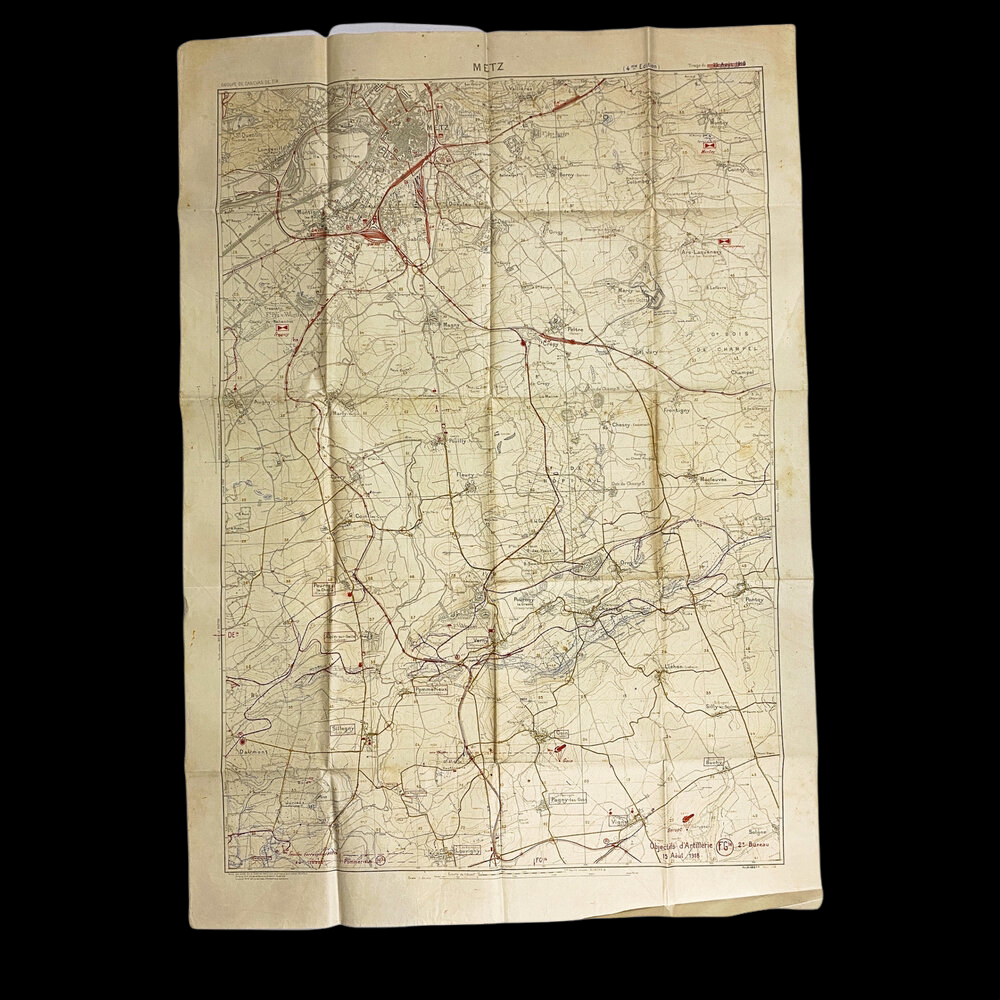
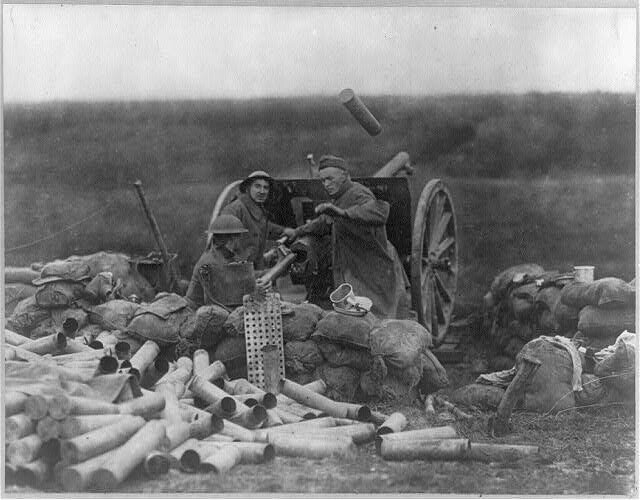

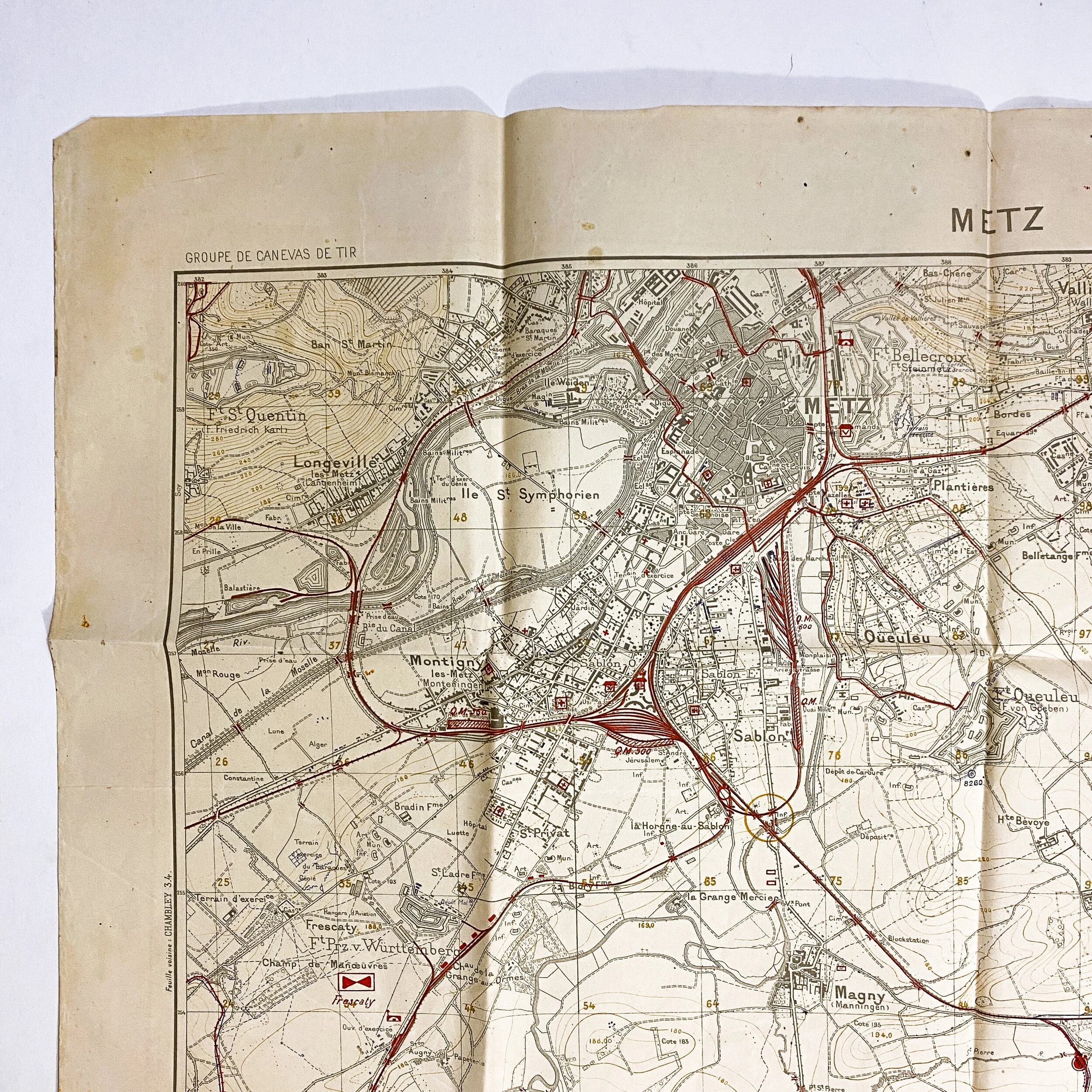
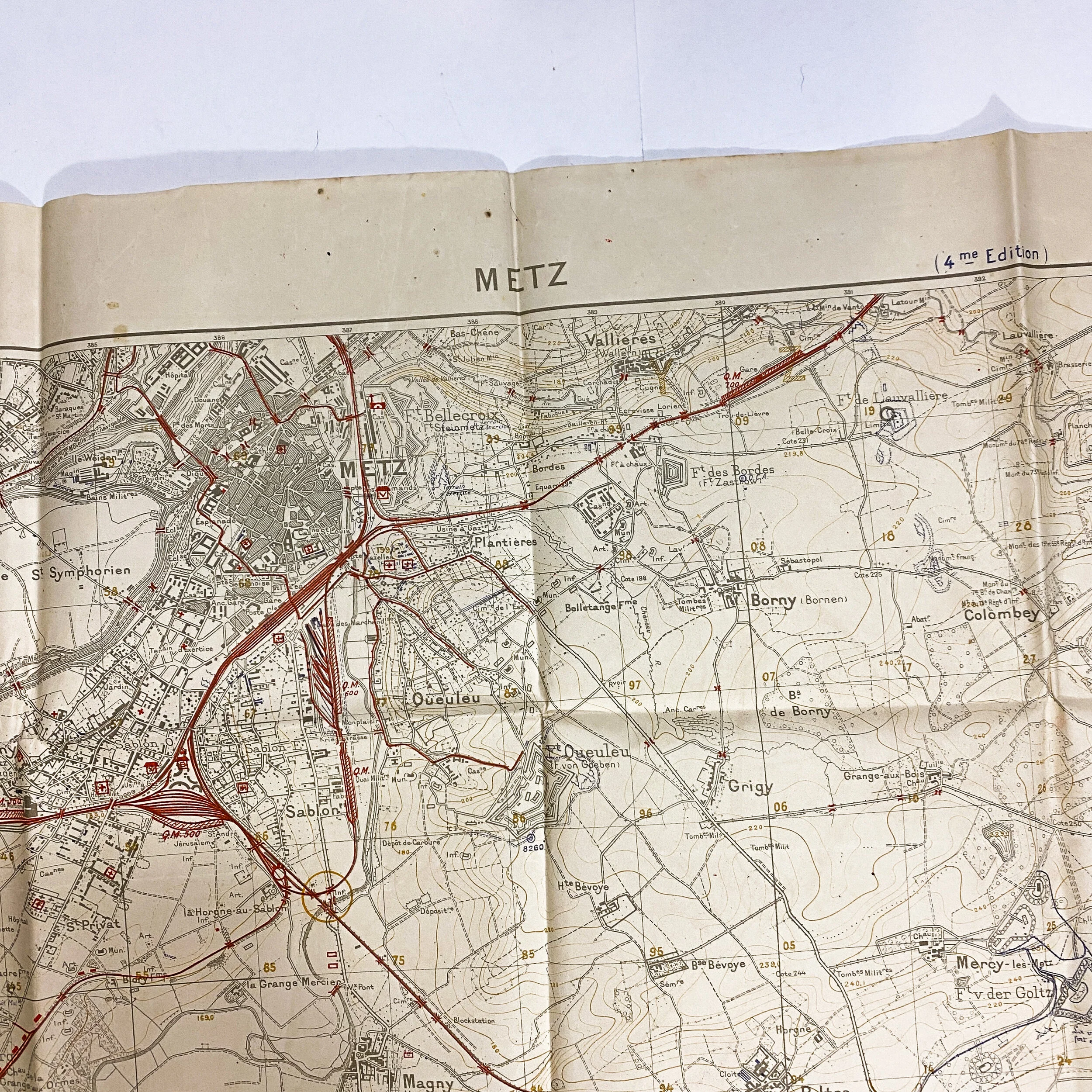
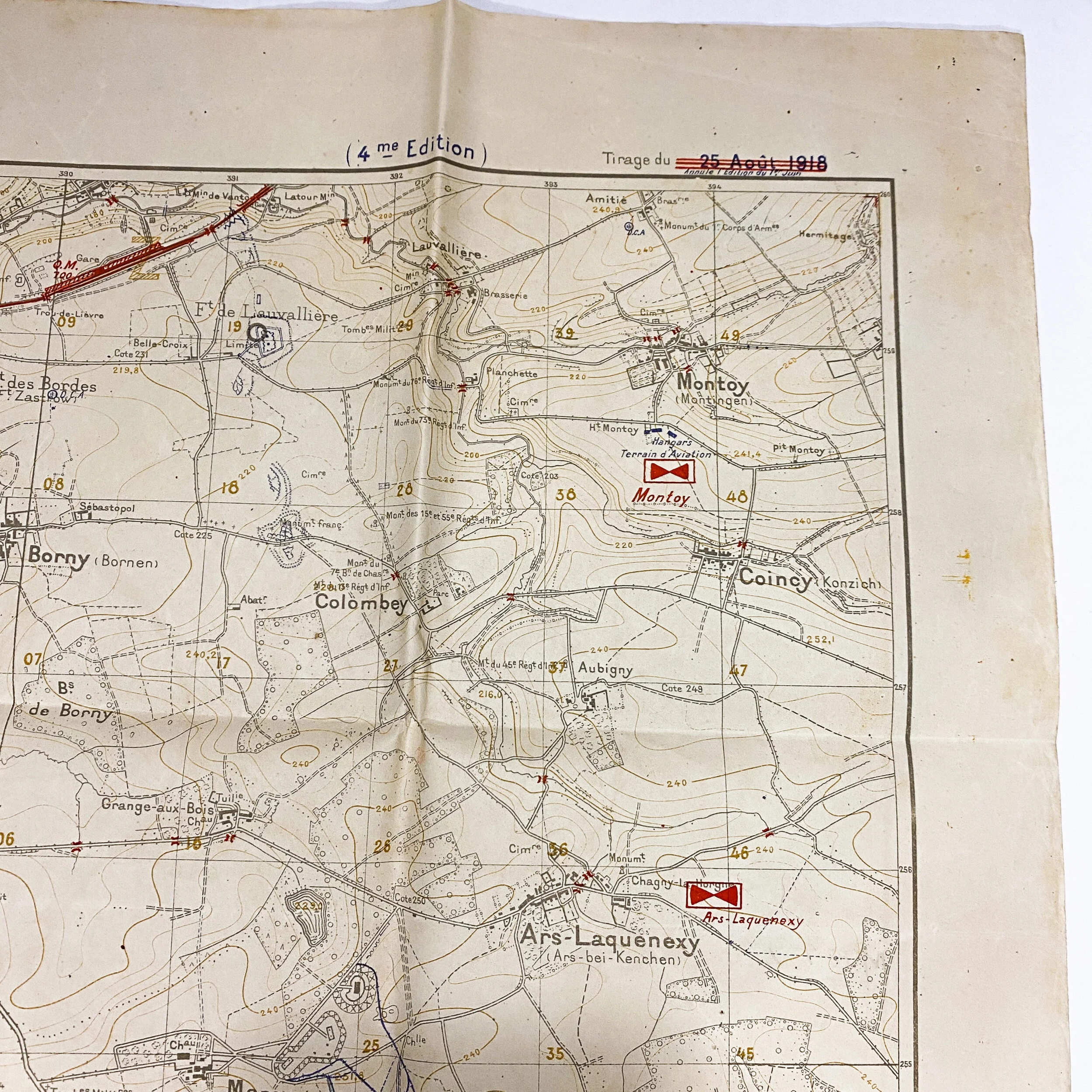
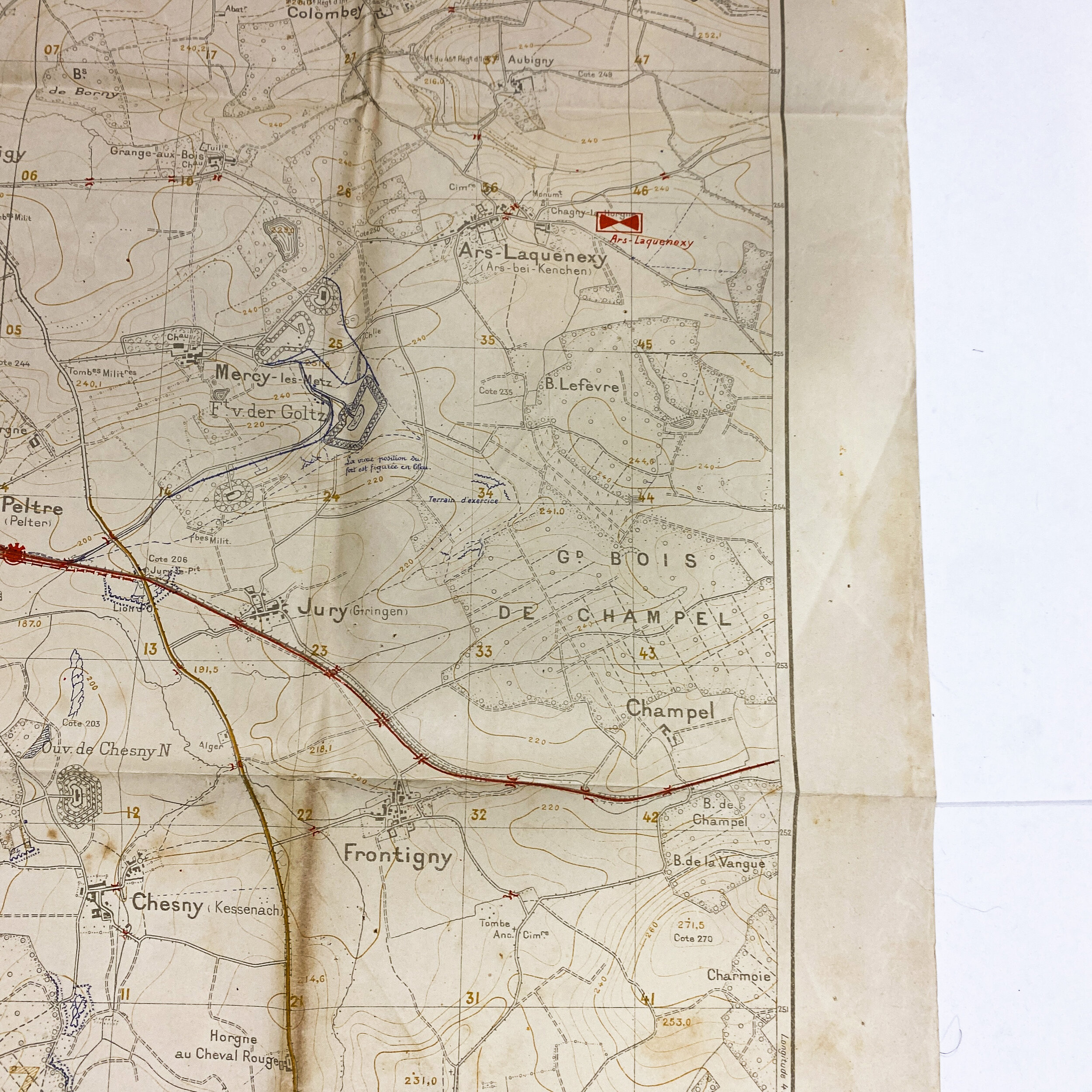


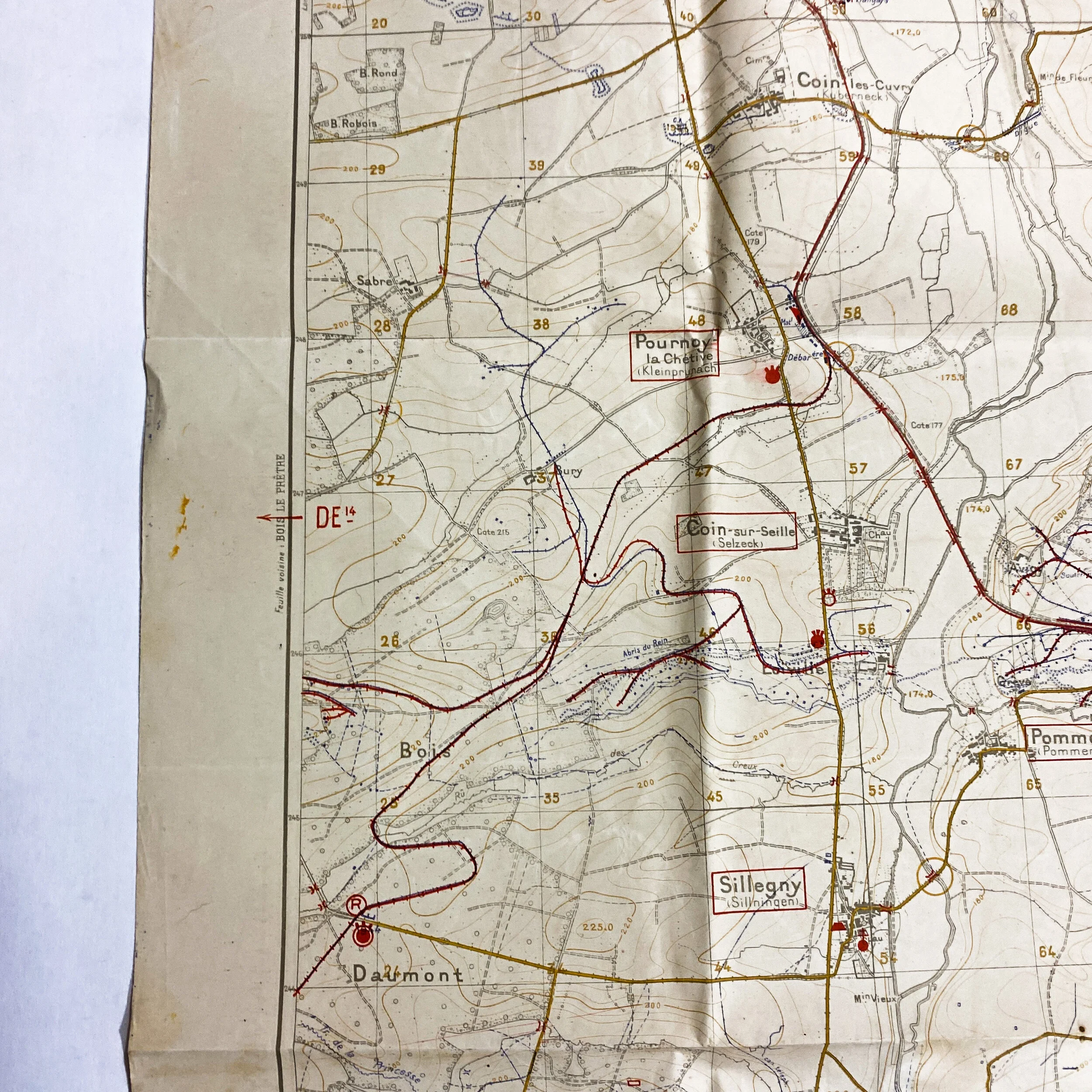





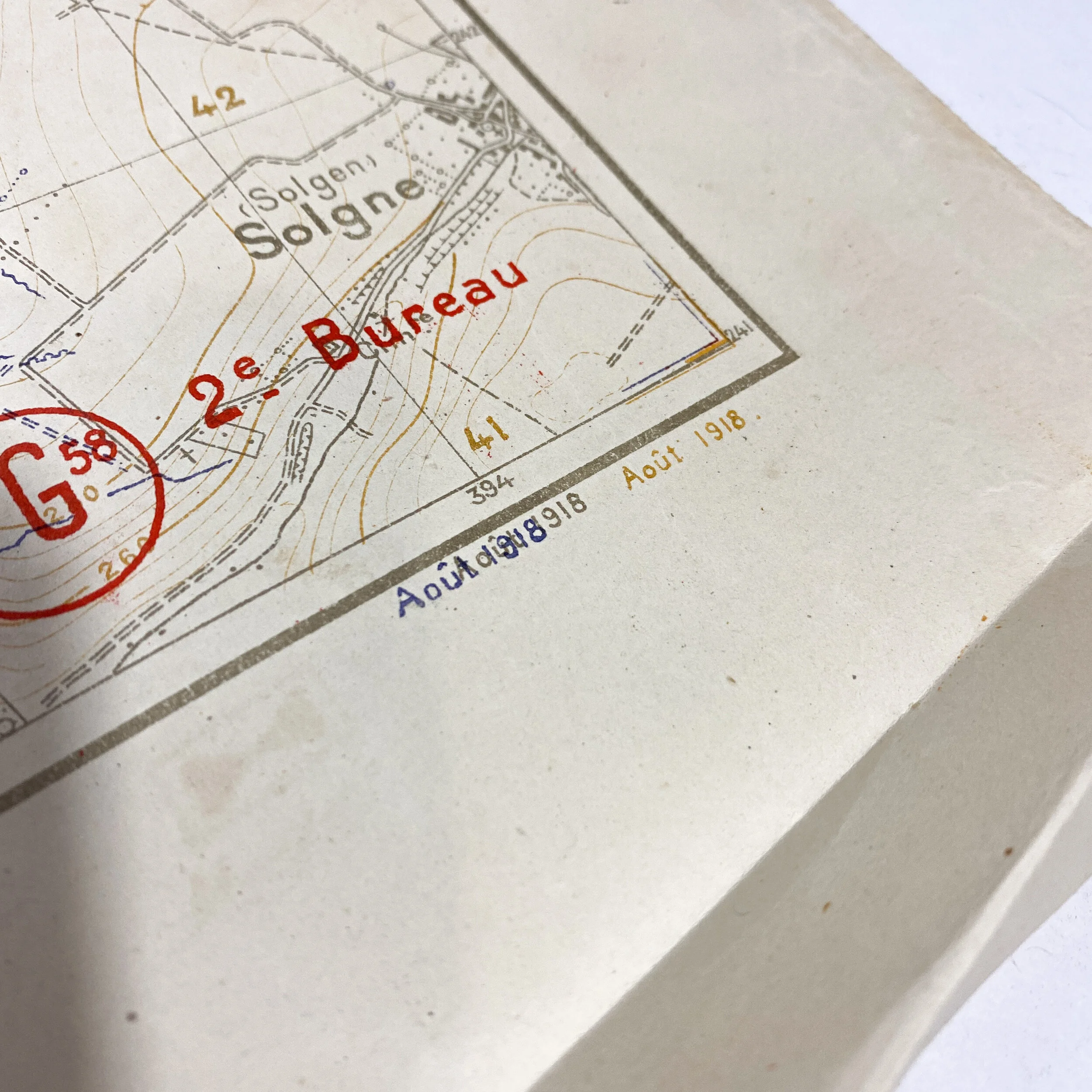



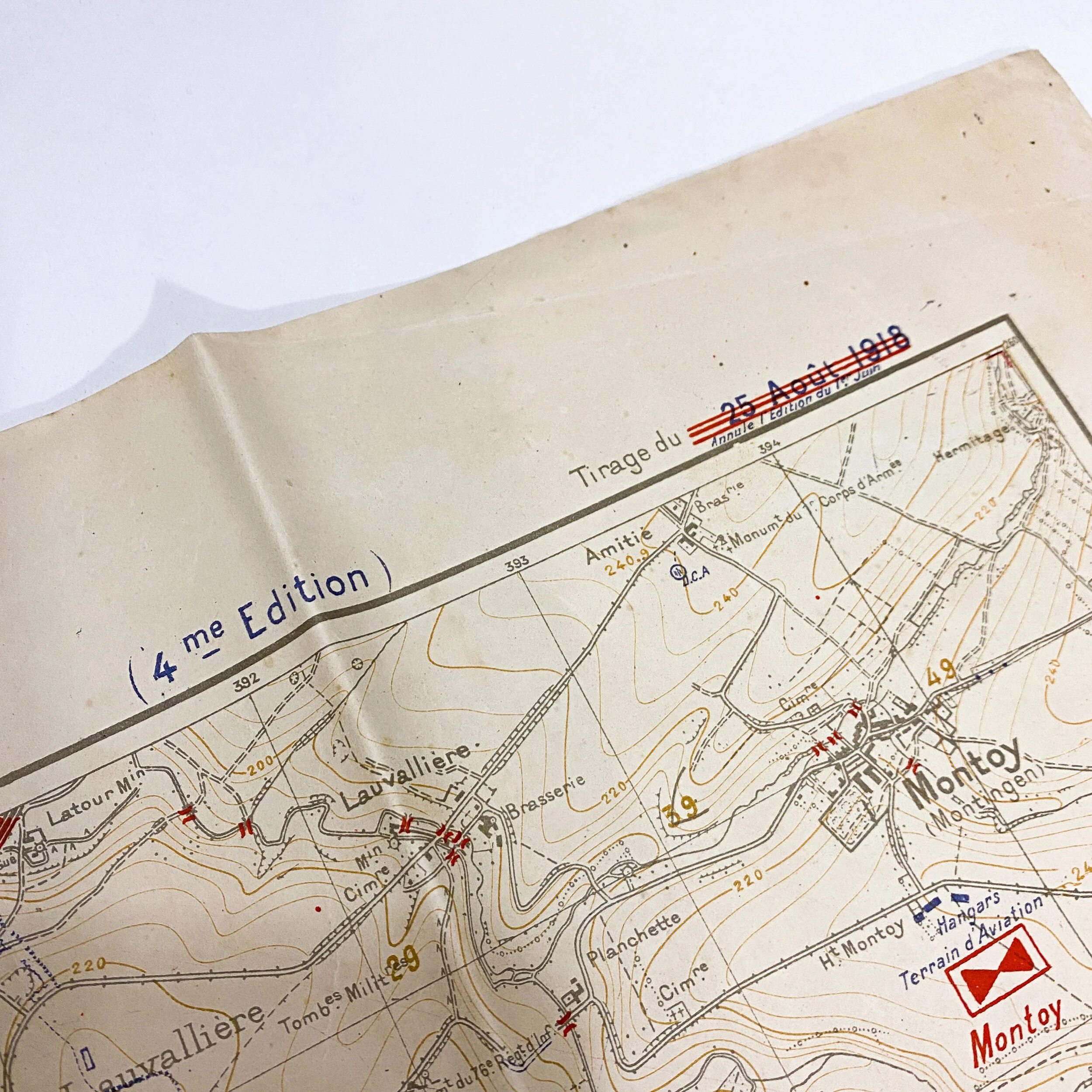
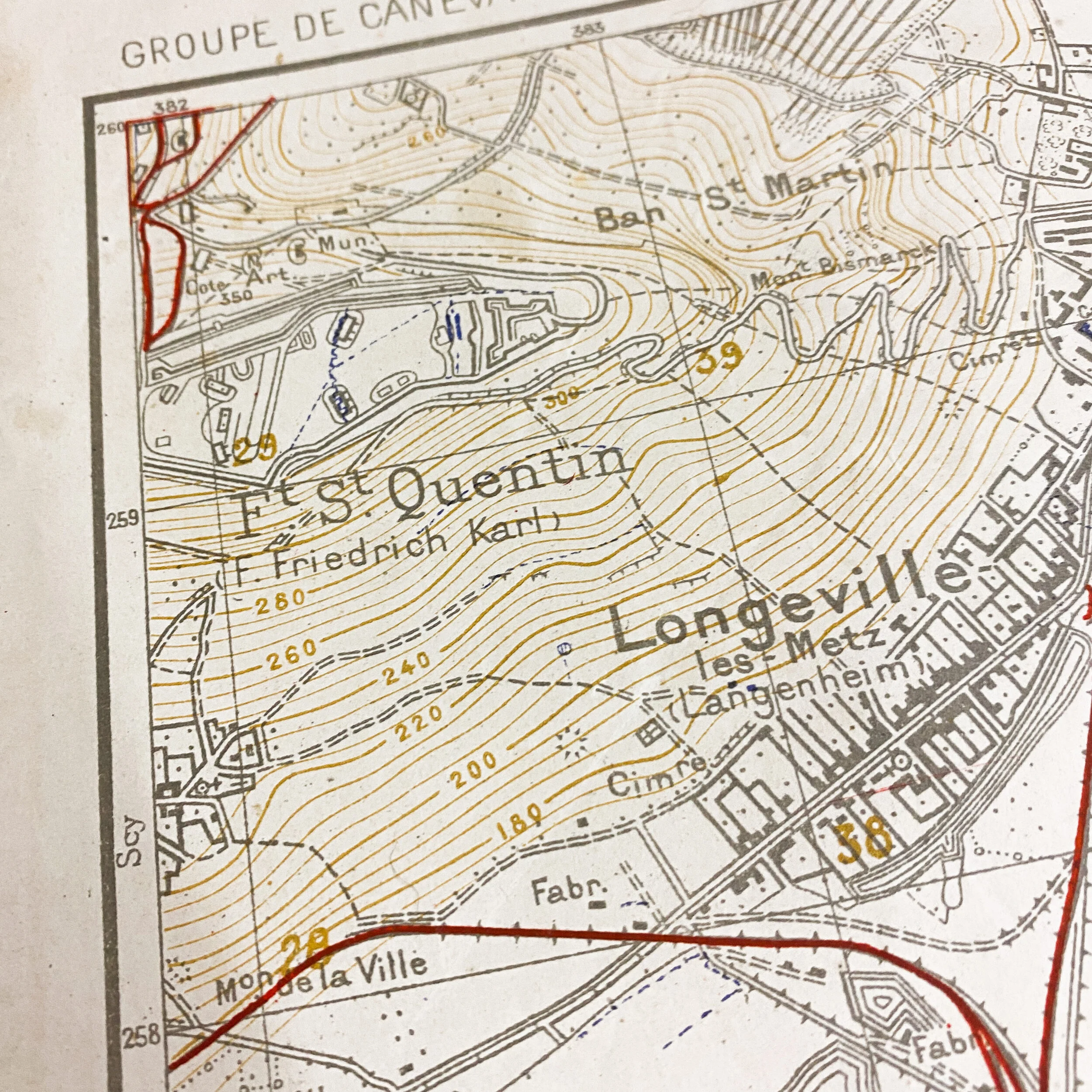


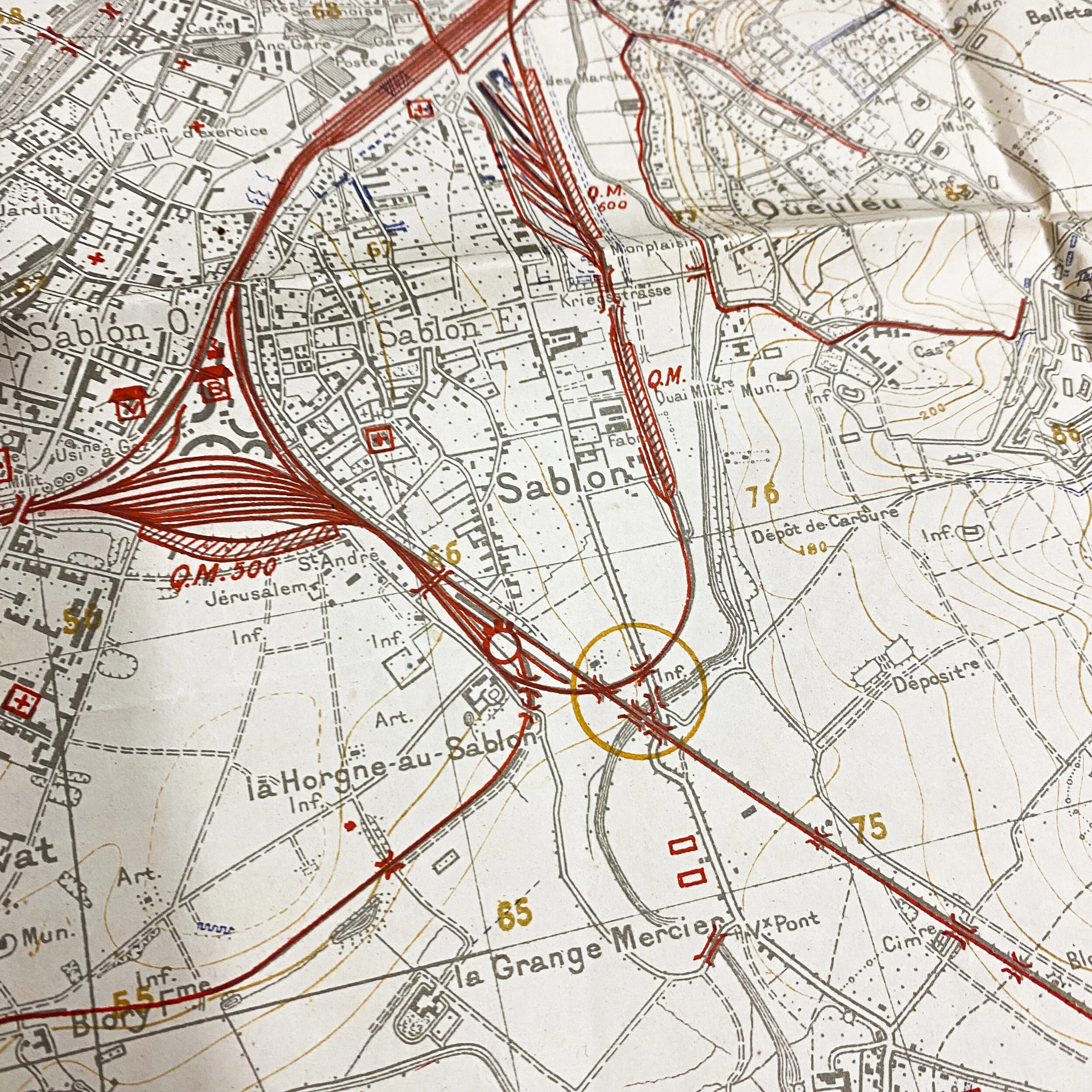


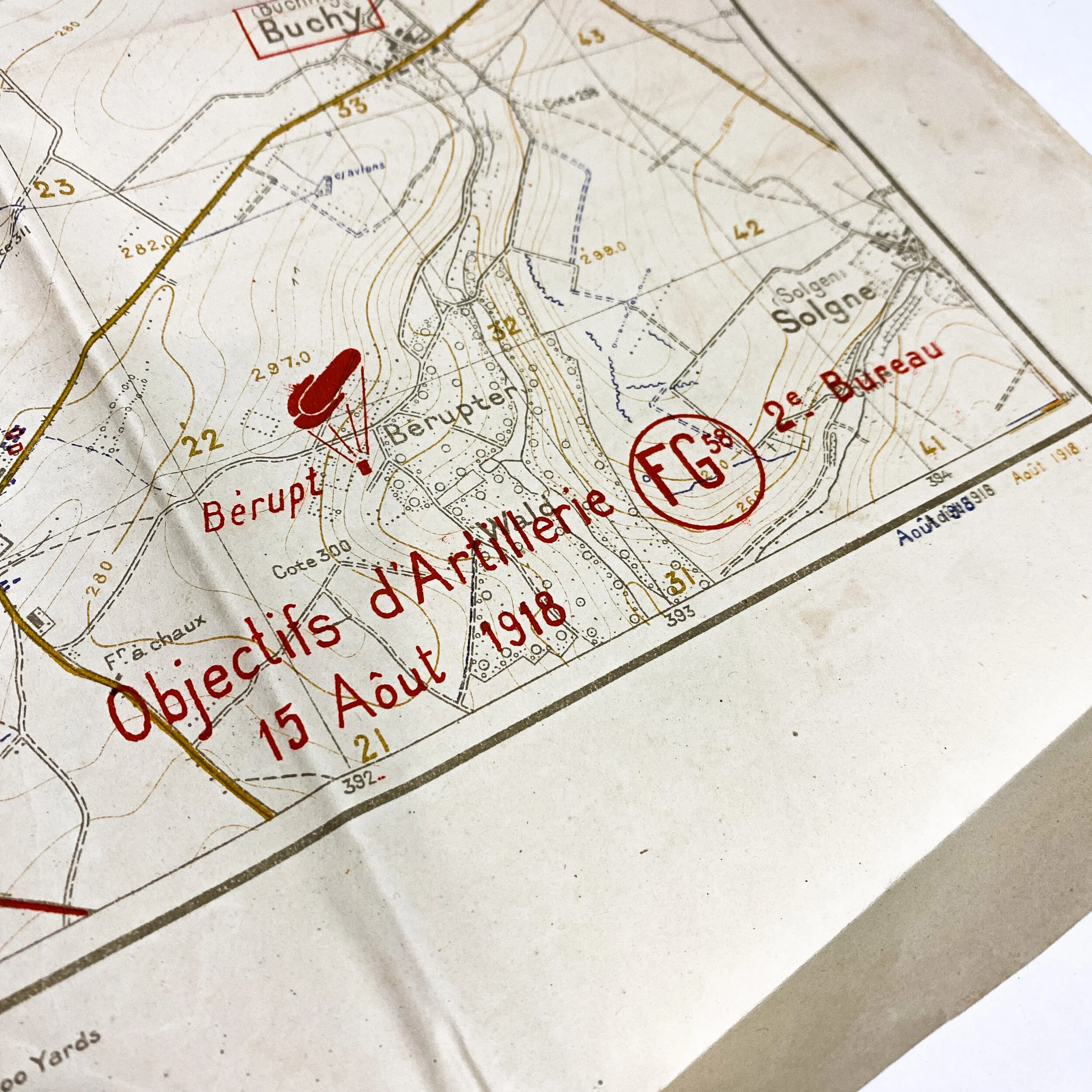


August 1918 Dated -Saint-Mihiel Offensive - A.E.F. Used French Artillery Map - "Metz" - 1st Lieut.. E. V. McKey Jr. - 134th Field Artillery
Size: 42 x 29.5 inches
This World War 1 French printed artillery trench map was printed and revised as of ‘15 Aout 1918’ (August 15th 1918), less than one month before the offensive took place. Titled “Metz ”, this trench map also is titled in bold red letters in the lower right corner with ‘objectifs d'artillerie’ or translate to english as ‘artillery targets’. This French map would have been used by A.E.F. field artillerymen as they provided strategic artillery barrages in the area. This map shows the geographical landscape of the area held by Germans during the famous Battle of Saint-Mihiel fought in September of 1918, or one month following the updated printing of this map. The A.E.F. and French troops needed the most updated map to show the battlefield of the front line, as a result this map would have been pivotal in the planned and offensive attacks. What makes this map so unique is that it shows marked bold (red) artillery targets, observation posts, and past fire locations.
The Saint-Mihiel offensive was a major World War I battle involving the American Expeditionary Forces (AEF) and 110,000 French troops under the command of General John J. Pershing of the United States against German positions. The U.S. Army Air Service played a significant role in this action. This battle marked the first use of the terms "D-Day" and "H-Hour" by the Americans. This map would have been similar to those used in the planning of attack in the area, divisional movements, as well as artillery fire support (used by the 62nd Field Artillery Brigade). For the added assistance of artillery firing coordinates, a transparent overlay of fine paper would have most likely been placed over this map and written on with H+ hours and firing lines ordered by headquarters. This map shows important villages and towns such as St.Quentin, Metz, Sablon, Creepy, and Verny. These towns and villages were located in the same sector where 1st Lieut.. E. V. McKey Jr. and the 134th Field Artillery provided extensive fire support and artillery barrages during the St. Mihiel offensive. The attack at the Saint-Mihiel salient was part of a plan by Pershing in which he hoped that the Americans would break through the German lines and capture the fortified city of Metz. It was the first large offensive launched mainly by the United States Army in World War I, and the attack caught the Germans in the process of retreating. This meant that their artillery was out of place and the American attack, coming up against disorganized German forces, proved more successful than expected. The Saint-Mihiel attack established the stature of the U.S. Army in the eyes of the French and British forces, and again demonstrated the critical role of artillery during World War I and the difficulty of supplying such massive armies while they were on the move. The U.S. attack faltered as artillery and food supplies were left behind on the muddy roads. The attack on Metz was not realized, as the Supreme Allied Commander Ferdinand Foch ordered the American troops to march towards Sedan and Mézières, which would lead to the Meuse-Argonne Offensive.
Collection: 1st Lieut.. E. V. McKey Jr. and the 134th Field Artillery.
This exclusive collection of World War I maps are from the bring back collection of 1st Lieut. E. V. McKey Jr. who was an A.E.F. artilleryman and saw extensive combat over the course of WWI serving valiantly with the 37th Infantry Division - 62nd Field Artillery Brigade -134th Field Artillery Regiment. The 62d Field Artillery Brigade - 134th Field Artillery is accredited battle participations in the Marbache sector where they provided extensive fire support and artillery barrages during the Meuse-Argonne offensive as well as the Thiaucourt sector during the St. Mihiel offensive. Many of these maps were used directly by 1st Lieut. E. V. McKey Jr. and his men of the 134th Field Artillery as they provided offensive and defensive fire supporting for the Allies with their 75 mm cannons. The 62nd Field Artillery Brigade is one of the most infamous field artillery unit of World War.
Saint-Mihiel Offensive:
The Saint-Mihiel offensive began on September 12th with a threefold assault on the salient. The main attack was made against the south face by two American corps. On the right was the I Corps (from right to left the 82nd, 90th, 5th, and 2nd Divisions in line with the 78th in reserve) covering a front from Pont-à-Mousson on the Moselle west toward Limey; on the left, the IV Corps (from right to left the 89th, 42d, and 1st Divisions in line with the 3rd in reserve) extending along a front from Limey west toward Marvoisin. A secondary thrust was carried out against the west face along the heights of the Meuse, from Mouilly north to Haudimont, by the V Corps (from right to left the 26th Division, the French 15th Colonial Division, and the 8th Brigade, 4th Division in line with the rest of the 4th in reserve). A holding attack against the apex, to keep the enemy in the salient, was made by the French II Colonial Corps (from right to left the French 39th Colonial Division, the French 26th Division, and the French 2nd Cavalry Division in line). In First Army reserve were the American 35th, 80th, and 91st Divisions.
The American V Corps location was at the northwestern vertices, the II French Colonial Corps at the southern apex, and the American IV and I Corps at the southeastern vertices of the salient. Furthermore, General Pershing's intent was obvious; to envelop the salient by using the main enveloping thrusts of the attack against the weak vertices. The remaining forces would then advance on a broad front toward Metz. This pincer action, by the IV and V Corps, was to drive the attack into the salient and to link the friendly forces at the French village of Vigneulles, while the II French Colonial Corps kept the remaining Germans tied down. The French II Colonial Corps were successful in the attack on the apex and entered Saint-Mihiel on 15 September 1918, taking 4000 prisoners. They then pushed into the plain of Woëvre up to Haumont-Woël-Doncourt.
The Allies mobilized 1,481 aircraft to provide air superiority and close air support over the front. About 40% were American-flown in American units, the remainder were British, French, and Italian. Nine bomber squadrons of the British RAF, although provided for the battle, were not under Pershing's operational control.
Defending the salient was German "Army Detachment C", consisting of eight divisions and a brigade in the line and about two divisions in reserve. Now desperately short of manpower, they had begun a step-by-step withdrawal from the salient only the day before the offensive began.
Pershing's plan had tanks supporting the advancing infantry, with two tank companies interspersed into a depth of at least three lines, and a third tank company in reserve. The result of the detailed planning was an almost unopposed assault into the salient. The American I Corps reached its first day's objective before noon, and the second day's objective by late afternoon of the second. The attack went so well on 12 September that Pershing ordered a speedup in the offensive. By the morning of 13 September, the 1st Division, advancing from the east, joined up with the 26th Division, moving in from the west, and before evening all objectives in the salient had been captured. At this point, Pershing halted further advances so that American units could be withdrawn for the coming Meuse-Argonne Offensive.